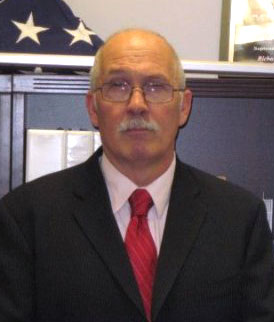
The Daunting Task of Former Deputy Commissioner Richard A. Rotanz

At 8:45 a.m., on Tuesday September 11, 2001, as New York city parents escorted their excited children to their first day of school, innocent citizens cast votes in an electoral primary, and the next shift of First Responders were reporting to duty, American Airlines Flight 11 slammed into the North Tower of the World Trade Center complex. It was at this moment former Deputy Commissioner of New York City’s Office of Emergency Management, Richard A. Rotanz (photo below) knew immediately it was not an accident. “The noise and fear, you can’t explain. I’ve been in buildings as they collapse but this was different. We knew we were under attack, and we knew we were going to die.”
Without a moment to process what was happening, 18 minutes later, at 9:03 a.m., United Airlines Flight 175 crashed into World Trade Center, South Tower. At that moment, the world knew this was no accident and the attacks kept coming. Then, at 9:37 a.m., American Airlines Flight 77 crashed into the western façade of the Pentagon.
At 9:42 a.m., for the first time in history, the FAA grounded all flights over or bound for the United States. It took two hours to land 3,300 commercial flights and 1,200 private planes at airports across the country and Canada. Shortly afterward, at 10:07 a.m., the final hijacked plane was taken down by civilian heroes aboard. United Flight 93 was decimated in a field in Somerset County, Pennsylvania.
The fear from the skies was past, but the terror in the Towers was just beginning.
Rich Rotanz’s office was located on the 23rd Floor of Tower 7 World Trade Center; close to 24,000 feet dedicated to the Office of Emergency Management. September 11, 2001, started like any other day; he reported to work and began discussing plans for a time sequence study on how fast they could distribute medicine to people. Out of nowhere, a loud roar, and he moved to the north facing window and all he could see was a huge, gaping hole in the North Tower. He called for emergency operations to activate on standby.
Moving from Tower 7 to Tower 1, his crew had to be careful. All he could see was people jumping, “You had to dodge them, it was horrible.” Then Tower 2 got hit – he immediately called for evacuation of buildings 5,6, and 7: “Get out, take nothing and head north.”
Standing on the Plaza level in Tower 1, Rotanz describes what happened next as a “group of jets and trains barreling at you all at once, then the floor buckles and I try to catch my step and then I’m rolling toward a wall of glass. I crash into it and hit my head and lose my glasses. We can’t see anything, the darkness, it was so dark and felt like hours, but it was only probably two minutes. We finally find the doors and get ourselves out.”
The entire experience was one that was surreal and full of carnage, Rich and his men were unaware that Tower 2 had fully collapsed, “You really can’t wrap your head around it. The darkness was so much, and the silence, the silence was deafening. Surreal. Then there were spears of light breaking through and I was thinking, am I dead?” Then the noise again and Tower 1 fell, after a long while managed to climb out of the rubble surrounding them. Sitting on the curb, covered in dirt, dust, and debris, unable to get the taste from his mouth and the smell from his nostrils, all Rotanz could think was, “how many?”
The Deputy Commissioner was far from dead, and there were so many, too many lost. Communications were down, cells were jammed, and everyone was missing. By the end of the day on September 11, a new command center had been established at Pier 92. Within 24 hours the command center had set up hundreds of different computers, wire communications, and radio communications. There was a DNA analysis group established and high-level security guarded all operations.
There were so many tasks to address: managing equipment, managing safety, managing IDs, developing an organized profile of which agency would handle which operation. Hundred of thousands of NYC employees and out of town volunteers began the complex endeavor of rescue, recovery, and clean-up. Rotanz was instrumental in coordinating the resources provided by over 130 different government and not-for-profit agencies, including private, commercial, and government watercraft. The largest nautical evacuation to ever take place was not Dunkirk, it was the 500,000 people that were evacuated from Manhattan to Brooklyn, Bronx, New Jersey, and Staten Island.
The challenges were never ending. Security concerns when celebrities and world leaders visited, managing heavy machinery and cross-agency communications, the threats of anthrax every day, the plane crash in the Rockaways, the freon in the north tower’s refrigeration tanks that threatened to blow an atomic force explosion if ignited, the multitude of daily injuries of First Responders, the mapping of the site, all while getting funeral messages daily. The rescue mission had turned to recovery within days.
September 11th, 2001 is not a story that can be told in 500 words or less. 9/11 was a tragic event that affected people around the world. Deputy Commissioner Rotanz is a hero that survived the collapse of both Twin Towers that catastrophic morning when so many were lost.
Twenty years later we remember the carnage, we remember the darkness, we remember the silence of those fallen and are grateful for the heroes like Richard Rotanz.



